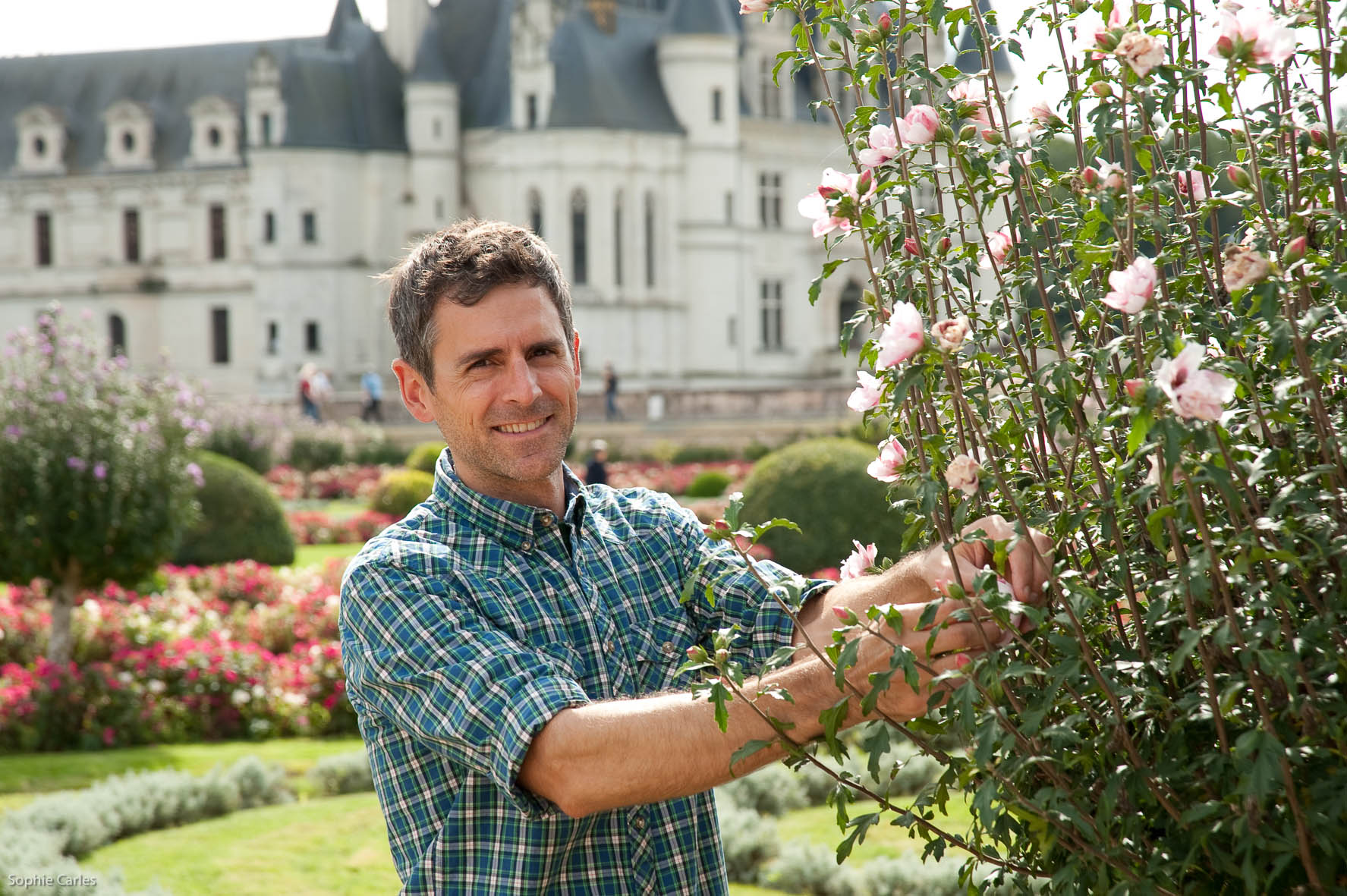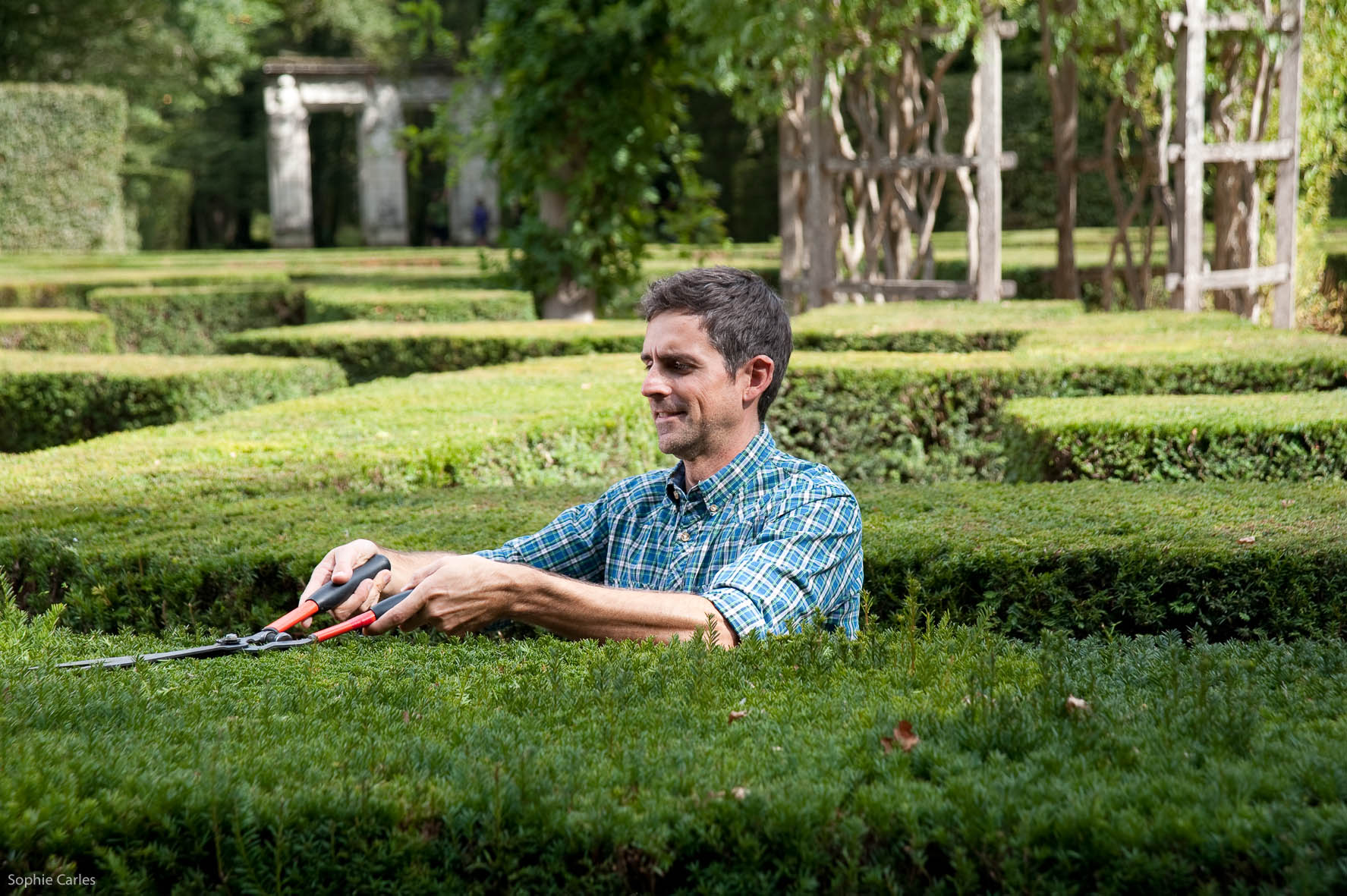Foreign Gardeners: Nick, from the U.S. to France
Longwood Gardens has been responsible for helping to shape many knowledgeable and talented gardeners along the way and Nick is one of them. When I was a student studying at Longwood, I remember meeting Nick in the Idea Garden where I was working one summer month. It was one of the many areas he was responsible for and while working together he helped teach me how to maneuver and work in a large perennial border. His horticulture knowledge, sense of humor and his pot displays were always a highlight when visiting this part of Longwood. Excited to see where your future and new opportunity takes you Nick. - James
Hello Nick, thanks for agreeing to be part of the 'Foreign Gardener' series. I know who you are but for our readers could you please introduce yourself and tell us what your profession is?
As you know, my name is Nicholas Tomlan and my current occupation is botanical director at Château de Chenonceau in the Loire valley, France.
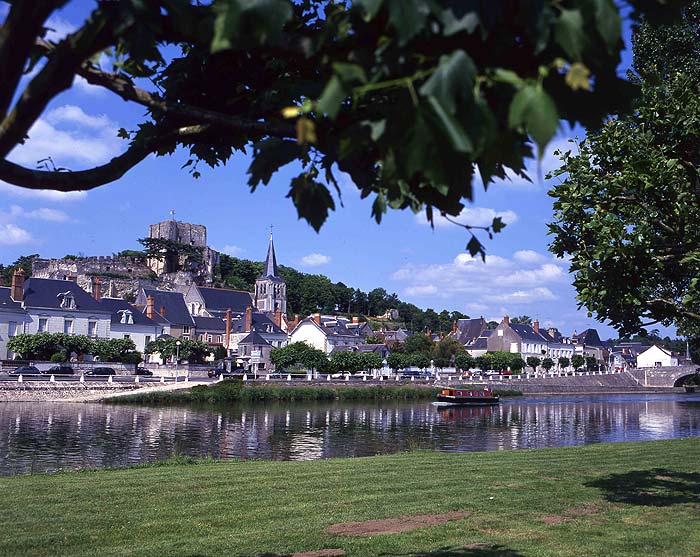
Where are you from originally and when was it that you made the move to France?
I grew up in Wilmington, Delaware and went to the University of Delaware. Not long after graduating I was hired at Longwood Gardens in Kennett Square, PA just 15 minutes from Wilmington.
After 15 years and diverse experiences at Longwood Gardens we packed up and moved to France in December of 2014, where my wife is from. The move was to be close to my wife’s family and also because I’ve been dreaming about living here since we got married over 10 years ago. I fell in love with the culture, the cuisine and of course the gardens.
Tell us a little about your previous experience at Longwood Gardens, including some of the responsibilities you had in the garden and what it was like to work there.
Back at Longwood I worked in many different areas of the garden. I literally started cutting the grass, which I secretly enjoyed immensely, and then moved over to the main fountain garden. From there I switched to the nursery for 3 years to help look after all the replacement trees growing there and to receive and plant out any new arrivals to the gardens. After the nursery, I requested to work in the idea garden as there was an opening there. I spent 4 years there in the perennial garden and the container garden which I loved. Then I did a stint out on the visitor’s center patio and the front gate area. Then as luck would have it I spent my last year and a half in the idea garden again, this time in the perennials and the vegetable garden which was wonderful.
At Longwood I truly became a gardener and learned from so many of the amazing talented horticulturists. At Longwood if you have a plant question, there is always someone who can answer it for you. A truly amazing wealth of knowledge exists there and to be able to tap into it was quite formative.
So, as crazy as it sounds I gave it all up to try life in France which was calling me. We packed up and moved without any job lined up but with some good leads. I don’t know how to explain it but I just had a feeling that it would work out and luckily I was right. I knew that’s where we needed to be at that point in our lives and it just felt right so we went for it. We had the chance to stay with my wife’s family about 45 minutes south of Paris near Fontainebleau. I knew the area pretty well since we had been visiting at least once a year since 2004.
That's quite a leap to make. What has been a welcome change that you have enjoyed since moving?
Within a 20 minute radius from their house, you have the Chateau de Fontainebleau, Chateau de Courances and also Vaux le Vicomte. These are some of the most well-known gardens in France and I remember seeing photos of them in my landscape design courses in school. Even today it’s impressive to see them each time I get to visit and seeing those gardens years ago slowly changed my perspective on gardens and design. Coming from America where formal gardens are so rare, these gardens were almost like alien planets until I understood the theories and stories behind them.
"So, fast forward to today, and I’m working as botanical director at Chenonceau."
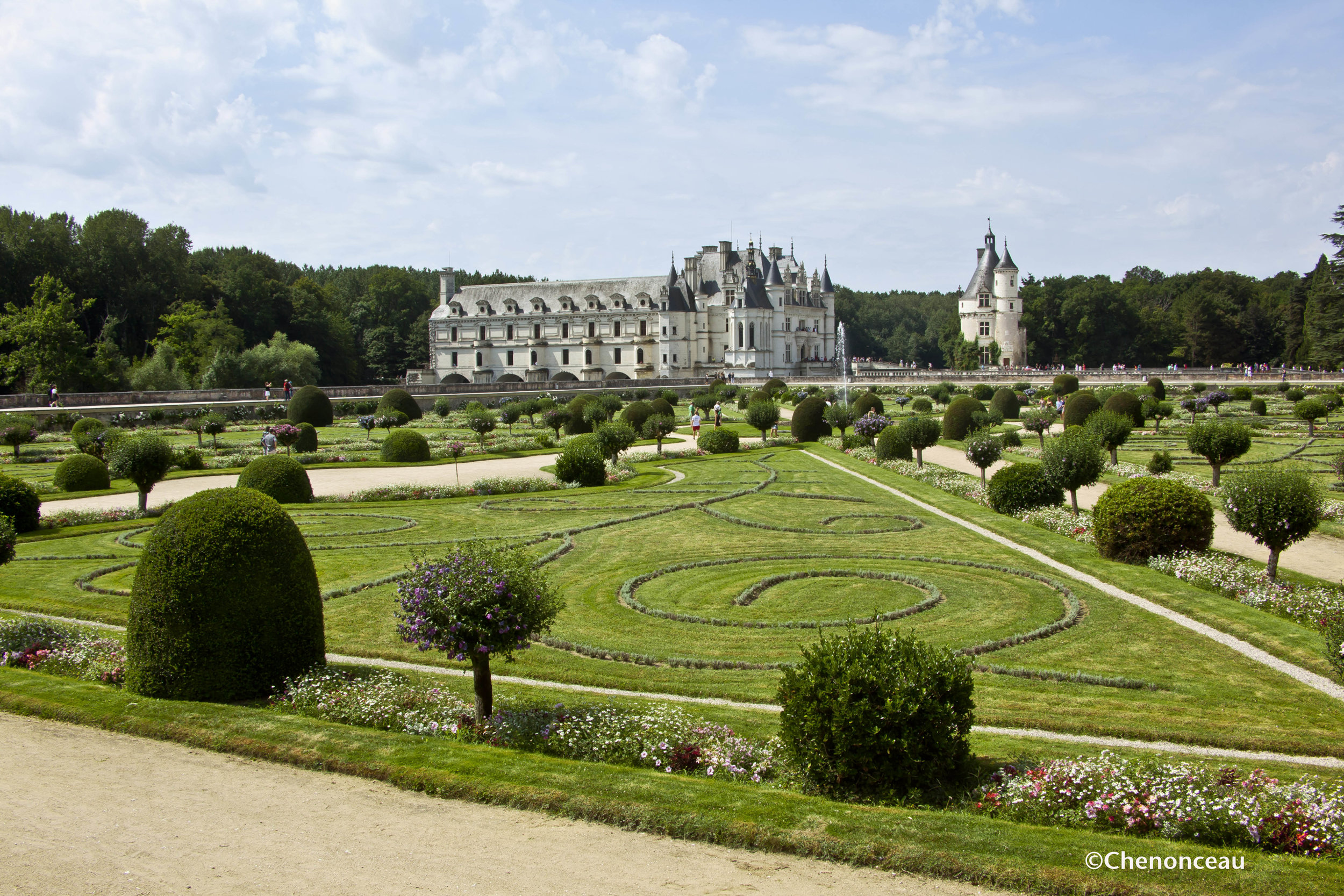
Congratulations on the new job Nick! Such a stunning place must have fascinating history, can you give us some highlights about some of its story?
The history of Chenonceau is quite long. I’ll give you some of the basics though. The castle started as a mill occupied by the Marques family. The lone tower to the right of the castle as you approach is the only part that still exists.
The property was then purchased by the Bohier family. Thomas Bohier was master of accounts of the city of Paris and financial administrator of Normandy, then secretary of finances of Italy, and eventually mayor of Tours. It was his time in Italy that spurred the construction of the first part of the castle that we see today. Very much inspired by Italian architecture, it was probably the first building in France to have a central hallway with the rooms organized to both sides.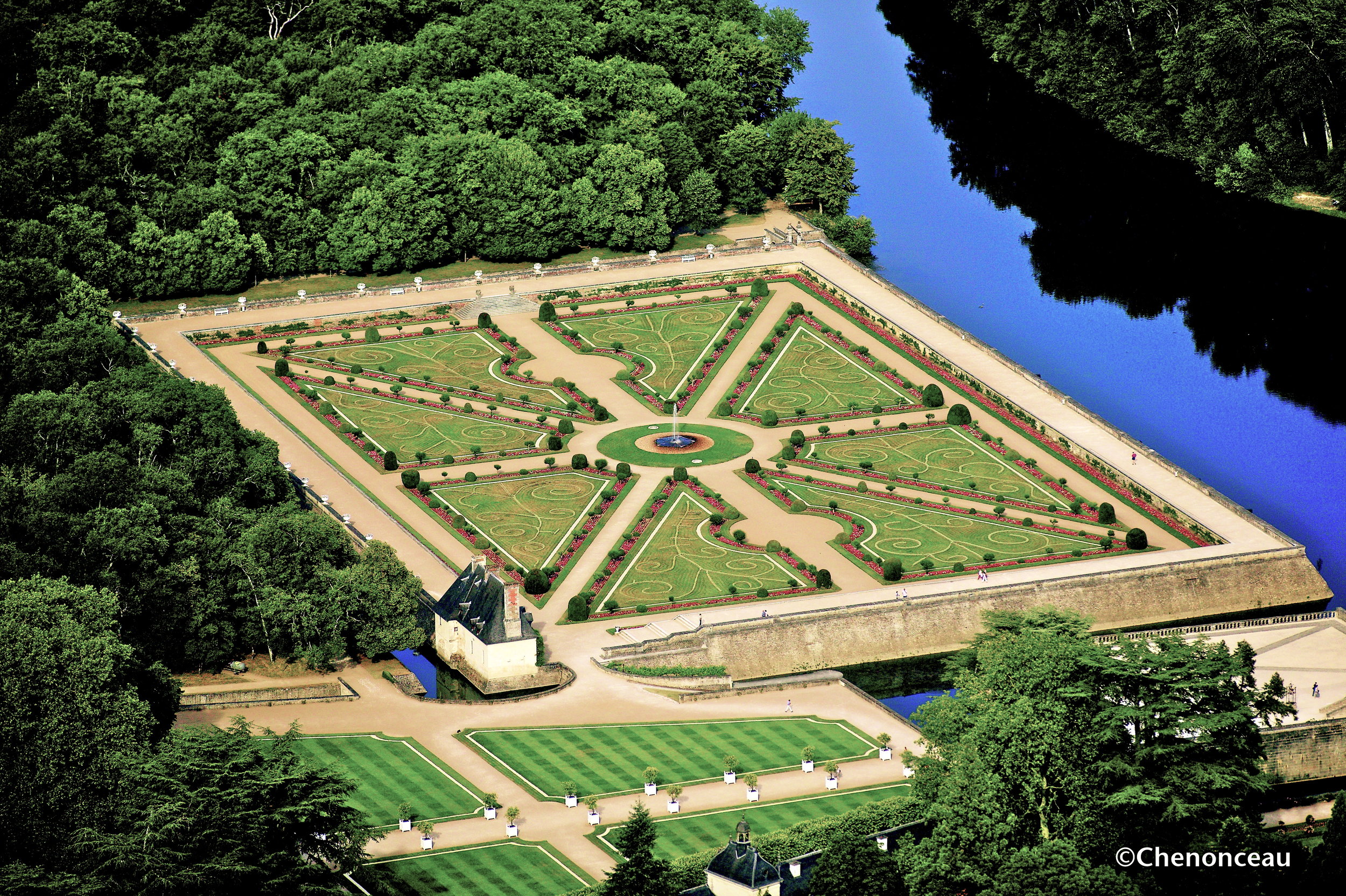
The Bohiers also started a garden that was mostly functional as were all the gardens in the late 15th century. The main castle is built and then eventually would fall into the hands of the kingdom of France. Henri II gave it immediately to his favorite mistress, Diane de Poitiers, in 1547. Diane went right to work constructing the large fortified garden we see today. She also had the bridge built across the river but at that time it was just an open air bridge built with the arches we see today.
Her garden contained all the latest horticultural pleasures. There were all the sorts of fruit trees, including apple, pear, plum, cherry and peach trees. Hawthorns and hazelnuts were ornamental shrubs alongside willows and mulberries (used for silkworm production). There were also flowers such as carnations, daisies, lilies, ancient rose varieties, lavenders, rosemary and a new very strange plant called artichoke that was just being introduced into the regions around Chenonceau. It was very much a mixture of function and beauty as the gardens of the time hadn’t yet separated the two aspects. Diane held the reigns until the death of Henri II in 1559.
It was then that the somewhat jealous queen Catherine de Medici took the castle from Diane and started her own projects at Chenonceau. Diane was given Chaumont-sur-Loire in exchange, which was oddly enough worth more than Chenonceau at the time. Catherine started adding to the castle and to the gardens as well. She added her own much smaller parterre to the opposite side of Diane’s. She had created other fountains, grottos and gardens as well which unfortunately are no longer existing. The organization of the two main gardens has changed over time but the overall layouts have stayed identical to when the two women originally laid them out.
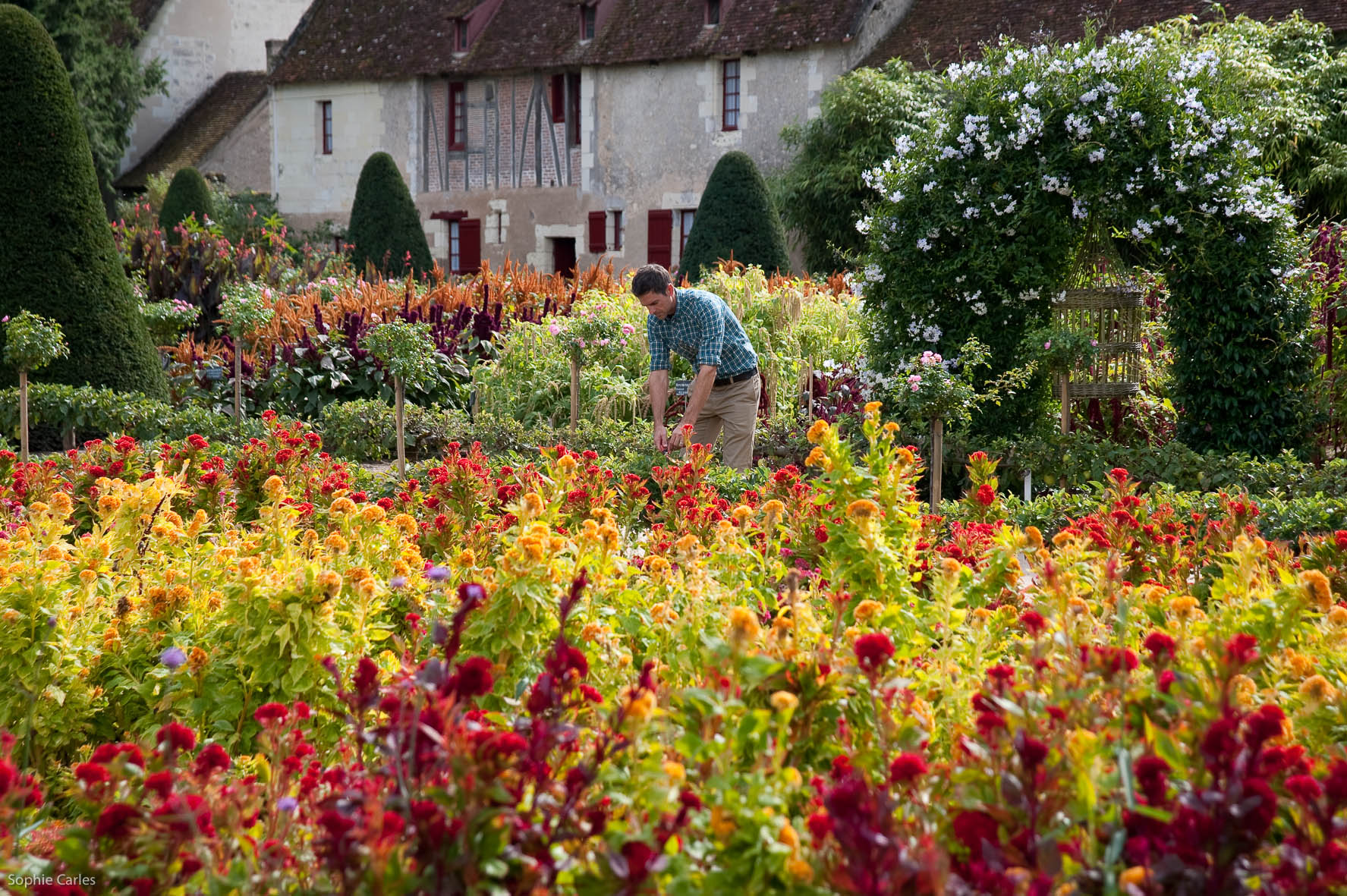
The gardens today are definitely more flower oriented than at the time they were created. There is also an English type landscape called the green garden (le jardin vert) in between Catherine’s garden and the old orangeries. It was installed during Catherine’s era but I don’t have a good history of how it was changed over the years. We’ll be looking into the archives to figure out what the original ideas were there. There is also a beautiful large potager that functions as a cutting garden for the florists and provides vegetables and herbs to the restaurant.
What are some of the challenges you look to address in the garden at this time? What are the future plans?
I’m here for several purposes. One is to diversify the plant palette here. Also, there are quite a few areas that we are looking to subtly improve for the guest experience here at the Chateau. With 800,000 to 900,000 visitors annually, there are going to be some challenges to a beautiful garden and we are working through these one by one at the moment.
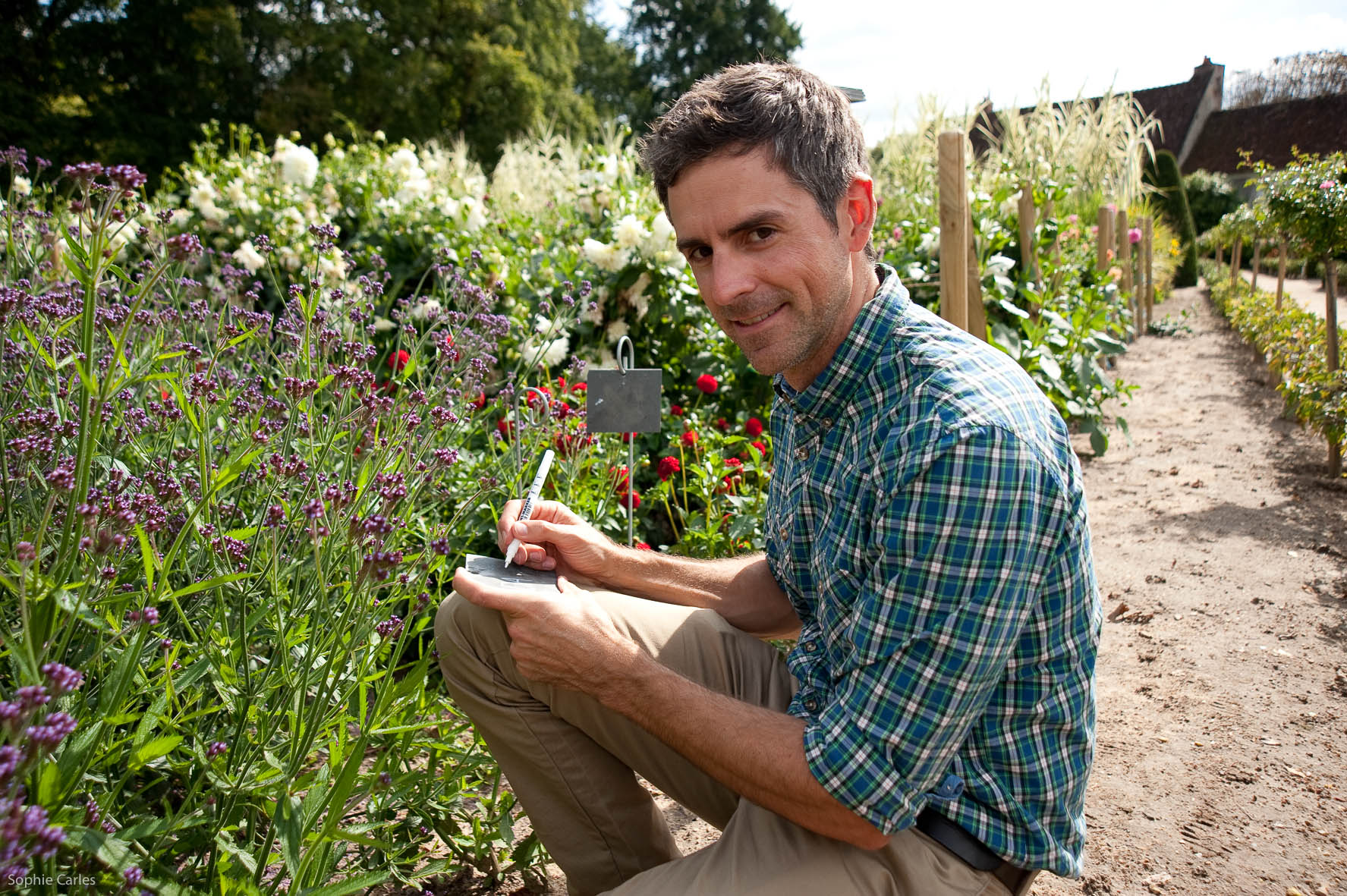
There are some design enhancements in the works for projects small and large so I think in the next several years we should start to see some new additions in the gardens.
Also, something I’m excited to get underway will be our new accessioning system here at Chenonceau. With the new system, we’re working to incorporate plant labels into the garden and to catalog the living collection which has never been done here.
One of the coolest things that I’m really looking forward to is to dig into the archives here to find out planting dates and also the history of the garden which dates back to 1551. It’s actually one of the first true renaissance gardens in France and was heavily influenced by the formal gardens of Italy which were a relatively new style of design at the time. So far I’m just scratching the surface here, and I think there are many more discoveries to come.
Having a new perspective on something can be an eye opener in many ways. Do you think there are benefits to living abroad as a gardener? What would you say those are...
I would say there are definitely benefits of being a gardener abroad. I think we get too caught up in the fact that there are a lot of plants or cultivars that are different from where we’re from but you learn them pretty quickly if you're observant. I look at it as a challenge to use things that we couldn’t use before because of climate issues or availability of certain plants. Coming in with a different perspective is not always a negative. Also, I know here in France there is definitely a need for gardeners who are coming in with a lot of plant knowledge.
Growing up in America and working for a large garden like Longwood has given me a different background than other gardeners in France. I think it would be fun to use those influences from my earlier career here in France. I think that American style of trying new things just to try them is great and I think there will definitely be opportunities to mix it up a little here at Chenonceau. Sometimes coming into a large historical garden with a completely different approach is beneficial and can lead to wonderful sort of hybrid style designs but I also think one has to show restraint and be sure the design works in the larger picture.
With the benefits aside, there must have been some difficulties you have encountered in France too? What would you say those challenges have been?
The move here wasn’t without its challenges and I could write a book about all the hurdles and adventures we’ve been through since December. What a crazy ride! The French love their paperwork and I have no idea how many documents we’ve compiled and signed since being here but it’s pretty impressive. All in all it was totally worth it since now we’re really happy with the situation here and the region couldn’t be more charming. I would say the biggest challenge sometimes is the language barrier. I’m pretty fluent but there is a lot of technical vocabulary that you don’t really know you need until you try to tell a story or express an idea in depth or even just tell a joke. But seriously, everyone here has been amazing making me feel like part of the team and I couldn’t have imagined it could work out as well as it has. So just for that I am really grateful.
Did you feel out job prospects before you moved from the U.S.? How did you find your current job at Chenonceau?
I found it to be too difficult to search for a job while still in America. I had some leads thanks to the huge network of international gardens through Longwood. But there were too many details with citizenship documents and so forth to really start applying to places before we moved. So as soon as all the paperwork was straightened out and I could work legally in France, we started sending letters to all the great gardens of France and kept our fingers crossed. After several great interviews we chose Chenonceau since it was a great opportunity to combine gardening with creativity and also to have the chance to dig into historical documents was really intriguing to me.
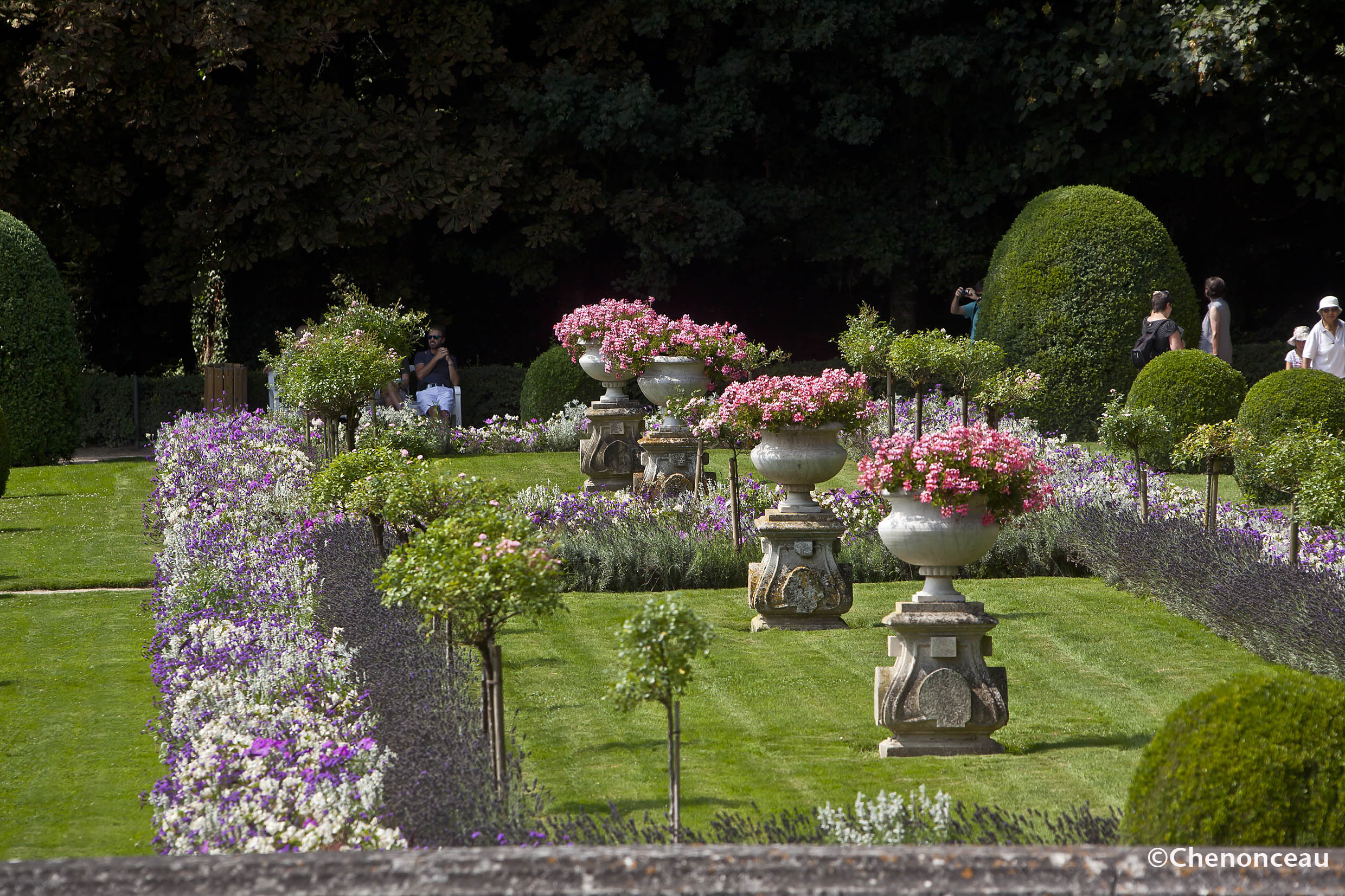
What advice would you give to other gardeners that might find themselves in your situation?
I guess some advice I would give to other gardeners in my position is to be patient and to enjoy as much as possible what is all around us. I try to feel like every day is sort of discovering something new here. And I would recommend visiting as many gardens as possible in the area. Even small gardens can sometimes inspire a plant combination or you’ll see something used in a way you hadn’t thought of. I actually made a list and every time I see a photo or write up of a garden I don’t know I add it to the list. Then I check them off each time I visit one. And also visit the good ones more than once. You’ll always see something new the second or third time. When you’re visiting, it’s always an interesting exercise to ask yourself why you like something or not. You’ll end up understanding the garden better if you know why something is pleasing to the eye and why it’s not as well.
If you could give your younger self some advice for this change, what would it be?
My advice to my younger self for this change would be to absolutely not ship a car to Europe! It took 6 months and a lot of euros to get it to meet the French standards. We love our car but it was not worth the headaches. Just buy a car here and you’ll thank me later. On another note I would tell myself to be realistic.
What should others do to prepare themselves for a move like this abroad?
It’s wonderful living here and I don’t regret a thing but living here and visiting on vacation are two different things. Think about all the complications ahead of time as well, like being able to access bank funds from America in Europe, visas, citizenship documents etc. It’s all very complicated so don’t save it for the last few months because you’ll run into problems for sure. If you’ve made the decision to move, you already know you like it here so just enjoy as much as possible all the things that are different and live like you are on vacation!
A whole plant palette can be available when you switch countries. Tell us what your new favorite plant is that you can grow now that you weren’t able to grow before?
I’m very interested to try Gunnera manicata here as it was definitely not hardy at Longwood. I saw it for the first time years ago on a garden trip through Normandy and Brittany growing in the French climate with colossal sized leaves. It may sound cliché, but my interest in topiary has increased. The climate here suits many plants used for clipping a little better than the east coast of America. When you see properly pruned topiary at Versailles and other gardens around you’ll be amazed at how dense they can be and the level of perfection is really incredible. I see a lot of perennials that love the climate here as well that will be really fun to play with.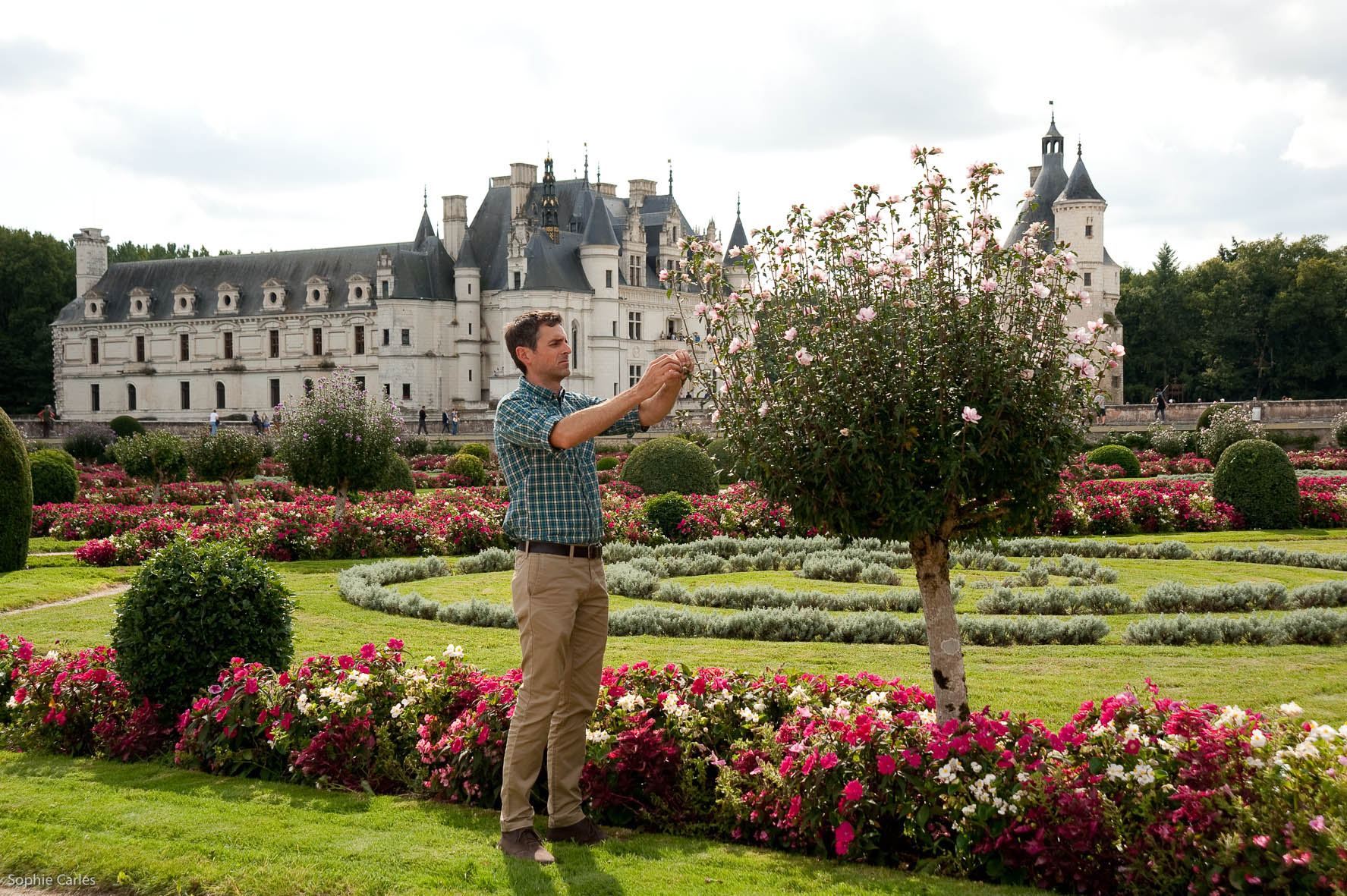
Your story is fascinating, thank you. Can you share with us before you go, one great memory you have had so far in your new home in France?
My greatest memory so far I would say was when I accepted the position here at Chenonceau and we finally knew where we would be living for the foreseeable future. Moving to the Loire valley has been really amazing and slowly discovering all the wonderful things to see, taste and do here has been so great.
We are in the process of buying a house so we’ve thrown another complicated adventure into the mix. But I know it will be so much fun. We will have a courtyard garden and I can’t wait to play with some ideas there as well. There is a really cool plant nursery (http://www.simier.fr/) just down the road as well. Next spring should be exciting for us.
Thanks again for agreeing to be a part of our Foreign Gardener series Nick. If you would like to ask Nick a question, leave a comment, or get in touch with Nick, please do so below, and we will gladly pass it on to him. All the best of luck to you Nick. - James
For further reading on the beautiful Chenonceau and Longwood Gardens please click on the links provided below. Merci.
&


